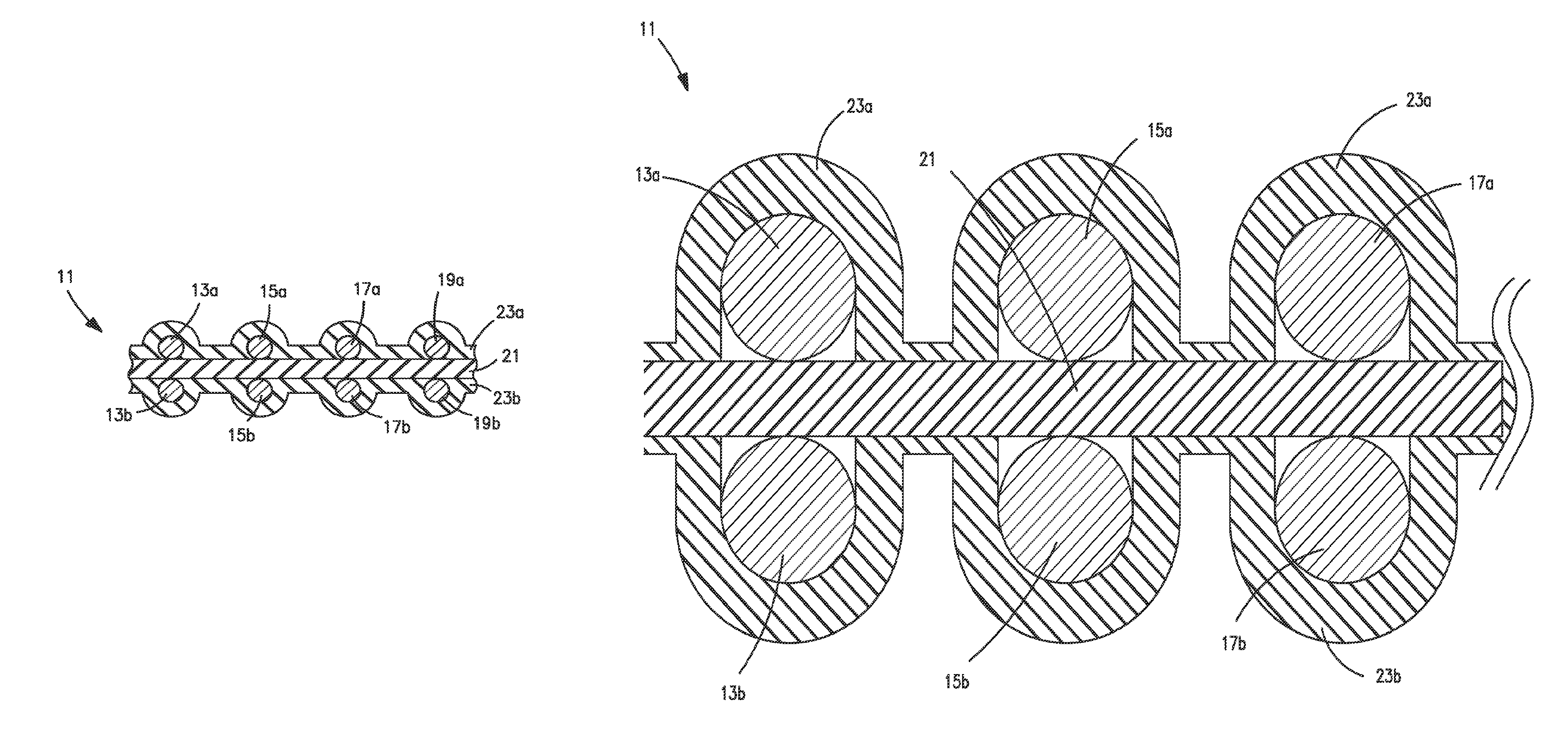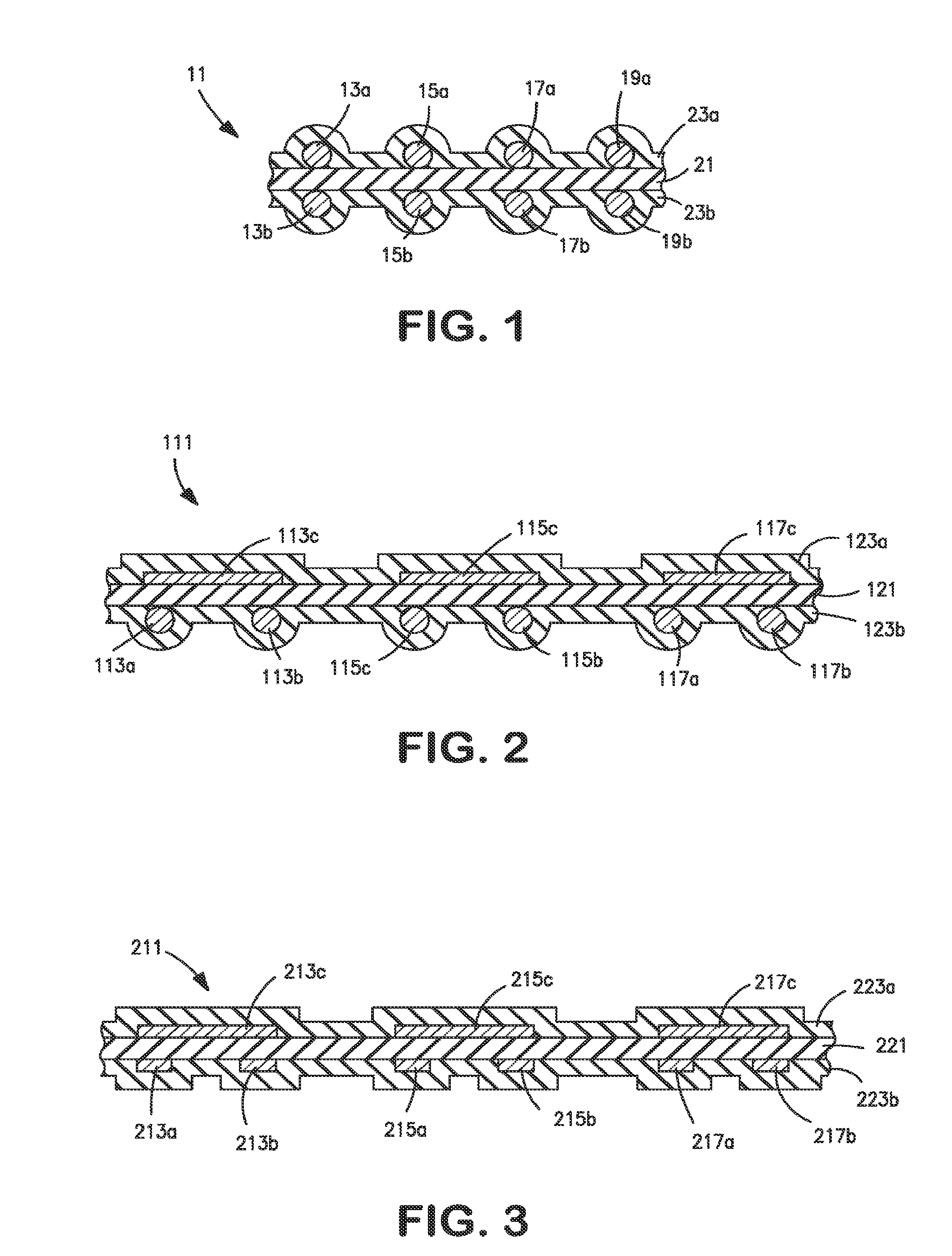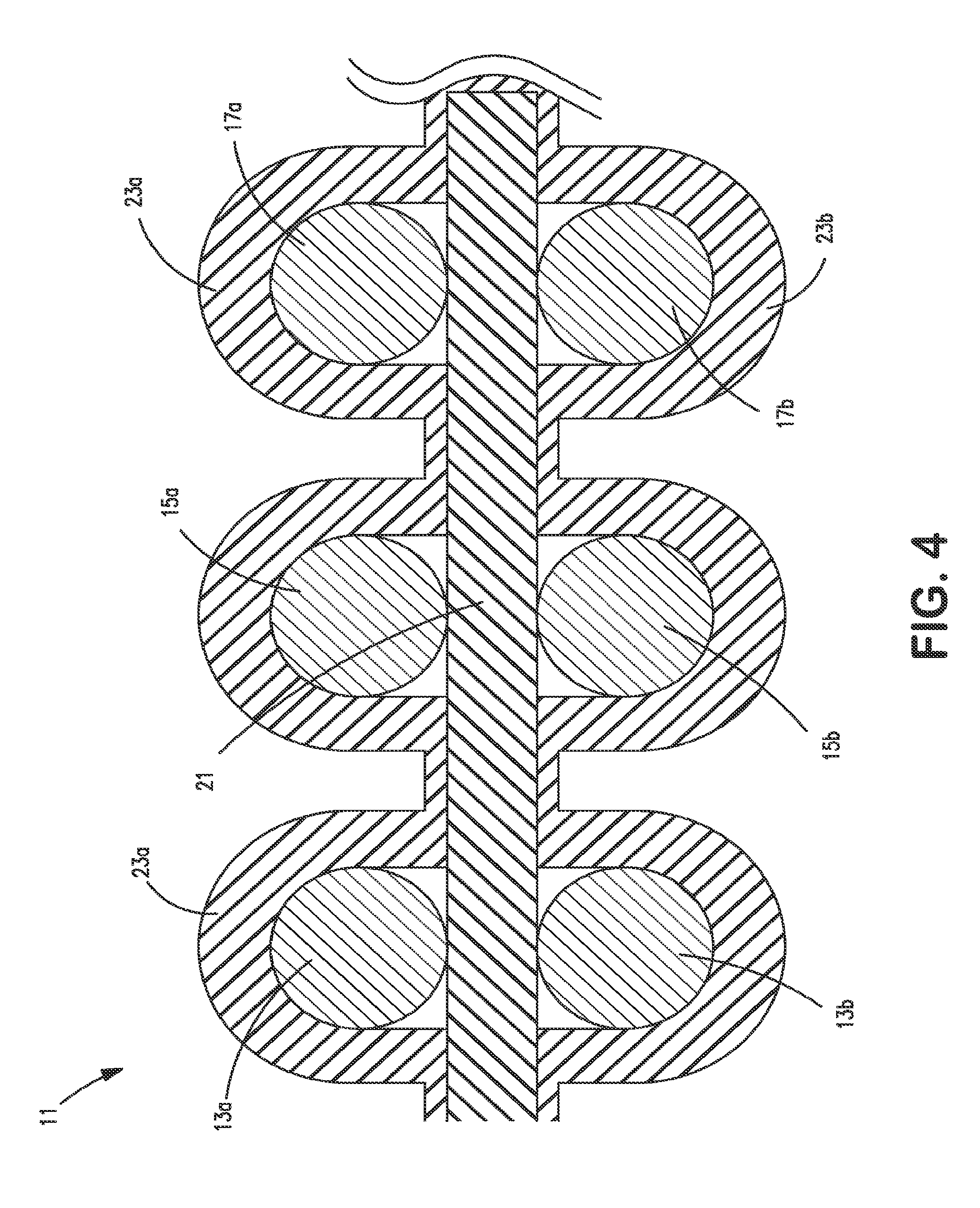Flat cable
a cable and flat technology, applied in the field of flat cables, can solve the problems of reducing the distance between the cable and the ground, the interference of radiation and emission is significantly reduced the mechanical loadability is higher, and the bending properties are better
- Summary
- Abstract
- Description
- Claims
- Application Information
AI Technical Summary
Benefits of technology
Problems solved by technology
Method used
Image
Examples
Embodiment Construction
[0038]In the following explanation of the drawings terms, like vertical, horizontal, upper, lower, left and right are used, which refer only to the depiction in the correspondingly treated figure, for the correspondingly treated flat cable, but have no absolute meaning and no longer apply in a position different than the one depicted.
[0039]FIG. 1 shows in a cross-sectional view part of the width of a flat cable 1 according to the invention with electrical round conductors 13a, 15a, 17a and 19a, which are situated in an upper conductor plane, and electrical round conductors 13b, 15b, 17b and 19b, which are situated in a lower conductor plane. When this flat cable is used for differential signal transmission, the electrical conductors 13a, 13b form a first differential signal conductor pair, the electrical conductors 15a and 15b form a second differential signal conductor pair, etc. A practical embodiment of such a flat cable can have more or less than the four signal conductor pairs ...
PUM
| Property | Measurement | Unit |
|---|---|---|
| dielectric constant ∈r | aaaaa | aaaaa |
| thickness | aaaaa | aaaaa |
| thickness | aaaaa | aaaaa |
Abstract
Description
Claims
Application Information
 Login to View More
Login to View More - R&D
- Intellectual Property
- Life Sciences
- Materials
- Tech Scout
- Unparalleled Data Quality
- Higher Quality Content
- 60% Fewer Hallucinations
Browse by: Latest US Patents, China's latest patents, Technical Efficacy Thesaurus, Application Domain, Technology Topic, Popular Technical Reports.
© 2025 PatSnap. All rights reserved.Legal|Privacy policy|Modern Slavery Act Transparency Statement|Sitemap|About US| Contact US: help@patsnap.com



